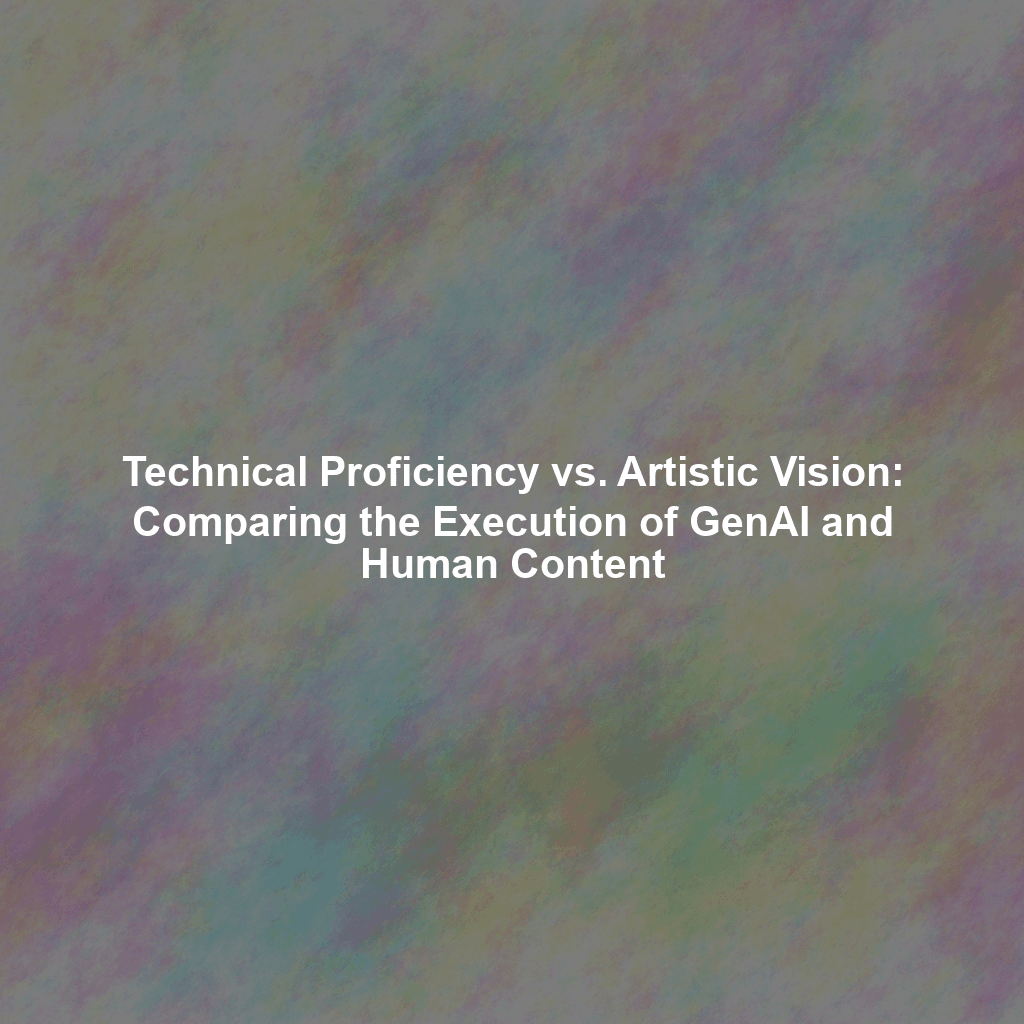Introduction: The Rise of AI in the Creative Landscape
Generative AI (GenAI) is rapidly transforming various aspects of content creation, from writing articles and generating images to composing music. While AI excels at automating tasks and achieving technical perfection, a critical question arises: can it truly replicate the artistic vision and nuanced understanding that characterize human creativity? This article delves into the core differences between GenAI and human-created content, examining their respective strengths and weaknesses across key creative domains.
Technical Proficiency: GenAI’s Domain
GenAI shines in areas demanding precision and adherence to rules. Its ability to analyze vast datasets allows it to master technical aspects with remarkable accuracy. Let’s explore some specific examples:
Grammar and Syntax
AI-powered writing tools are adept at producing grammatically correct and syntactically sound text. They can identify and correct errors that might slip past human editors, ensuring a polished and professional output. In this realm, GenAI often surpasses human capabilities in consistency and error-free execution.
Visual Composition: Achieving Calculated Harmony
GenAI algorithms can generate images that adhere to specific compositional rules, such as the rule of thirds or leading lines. They can create visually appealing designs based on pre-defined parameters, ensuring balance and harmony within the artwork. However, this calculated approach sometimes lacks the spontaneity and emotional depth of human-created art.
Sound Design: Precision in Audio Landscapes
In the realm of sound design, GenAI can create precise and technically sound audio landscapes. It can generate sound effects, manipulate audio signals, and even compose melodies based on mathematical algorithms. This technical proficiency allows for the creation of consistent and predictable audio experiences.
Artistic Vision: The Human Advantage
While GenAI excels in technical execution, it often falls short when it comes to artistic vision and nuanced understanding. The ability to infuse content with emotion, meaning, and personal expression remains a distinctly human trait.
Emotional Depth and Nuance
Human artists draw upon their experiences, emotions, and perspectives to create content that resonates with audiences on a deeper level. They can convey complex emotions, explore subtle nuances, and evoke empathy in ways that AI currently struggles to replicate. This emotional depth is crucial for creating truly impactful and memorable content.
Originality and Innovation
Human creativity is driven by a desire to explore new ideas, challenge conventions, and push the boundaries of artistic expression. While GenAI can generate novel combinations of existing elements, it often lacks the genuine originality and groundbreaking innovation that characterize human-led creative movements. Humans can imagine completely new concepts; AI is inherently limited to its training data.
Understanding Context and Audience
Human creators possess a deep understanding of cultural context, social dynamics, and audience preferences. They can tailor their content to resonate with specific demographics, address relevant issues, and create meaningful connections with their audience. This nuanced understanding allows them to create content that is both engaging and culturally relevant.
The Synergy of Human and AI: A Collaborative Future?
Instead of viewing GenAI and human creativity as mutually exclusive, it’s more productive to consider them as complementary forces. AI can augment human capabilities by automating tedious tasks, providing new tools and techniques, and offering fresh perspectives. By embracing a collaborative approach, we can harness the technical proficiency of AI while retaining the artistic vision and nuanced understanding of human creators.
Examples of Successful Collaboration
- AI-assisted writing tools that provide suggestions and feedback to human authors.
- Image generation software that allows artists to create unique visual effects and explore new styles.
- Music composition tools that help musicians experiment with different melodies, harmonies, and rhythms.
Ethical Considerations: The Responsibilities of AI in Creation
As GenAI becomes more powerful, it’s essential to address the ethical considerations surrounding its use in content creation. This includes issues such as copyright infringement, plagiarism, bias in algorithms, and the potential displacement of human artists. Thoughtful guidelines and regulations are needed to ensure that AI is used responsibly and ethically in the creative landscape.
Conclusion: Embracing the Future of Creativity
GenAI offers tremendous potential for transforming the way we create and consume content. While it excels in technical precision and automation, the artistic vision, emotional depth, and nuanced understanding of human creativity remain indispensable. By embracing a collaborative approach and addressing the ethical considerations, we can unlock the full potential of both human and AI creativity, paving the way for a more innovative and enriching future.
 Skip to content
Skip to content

